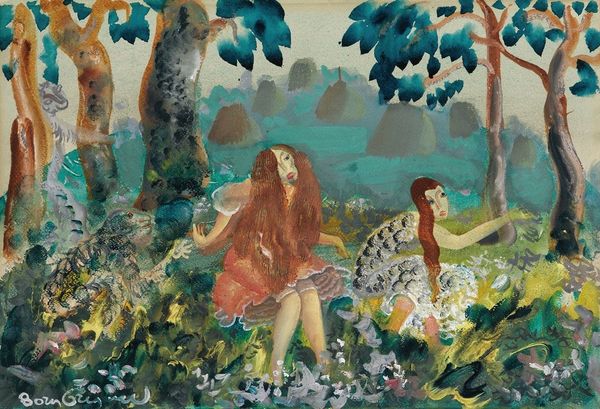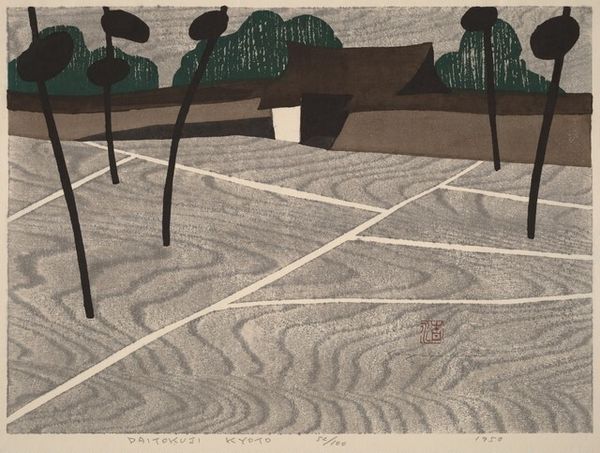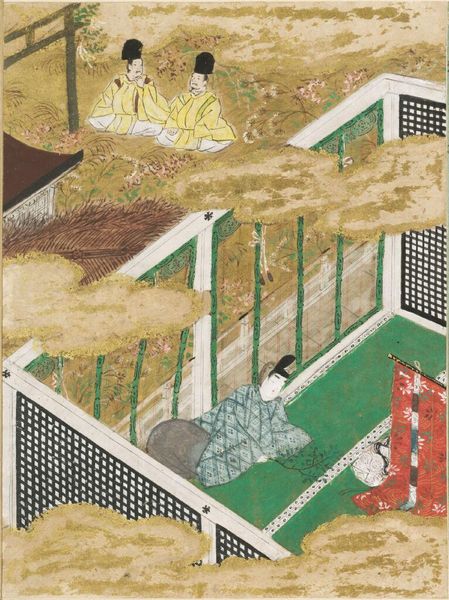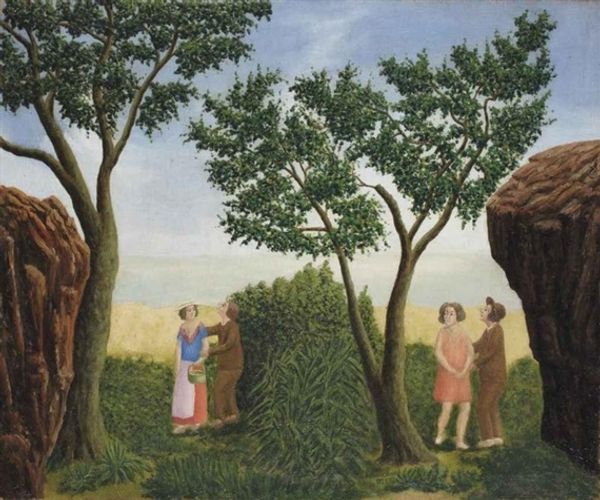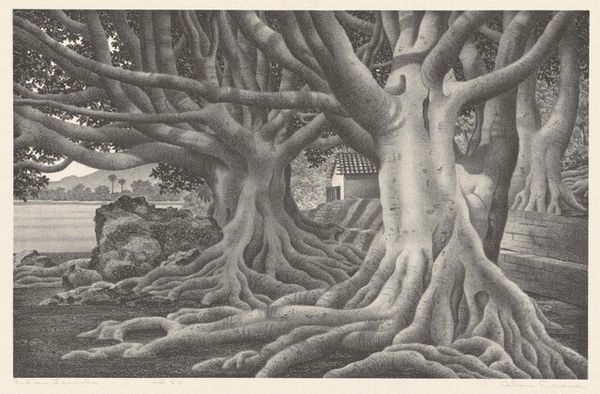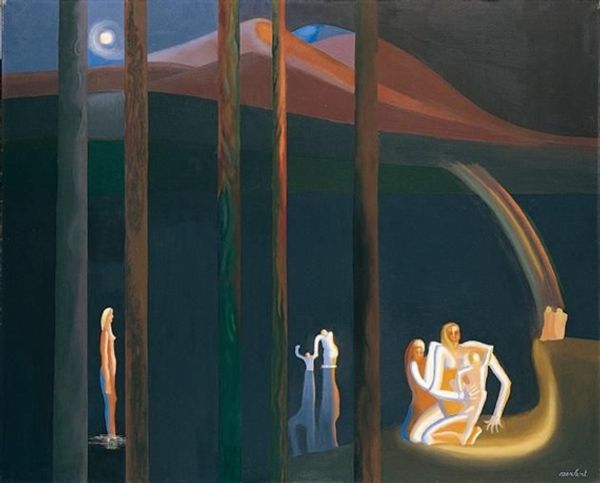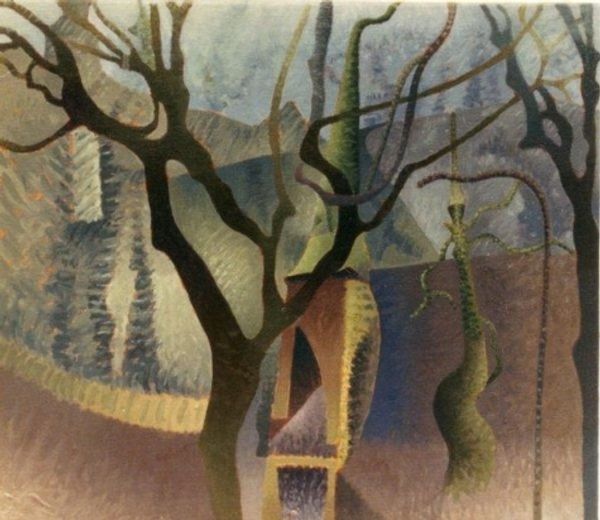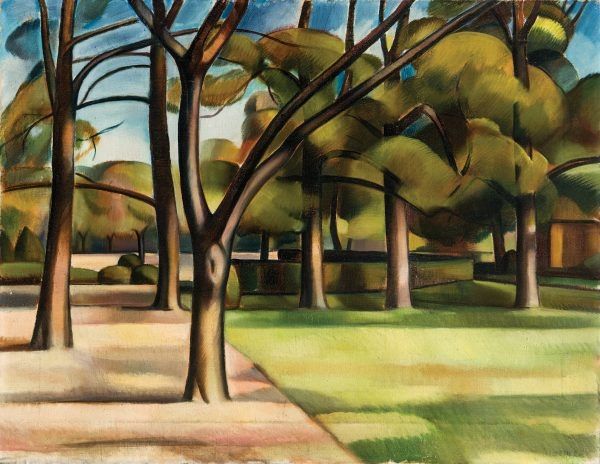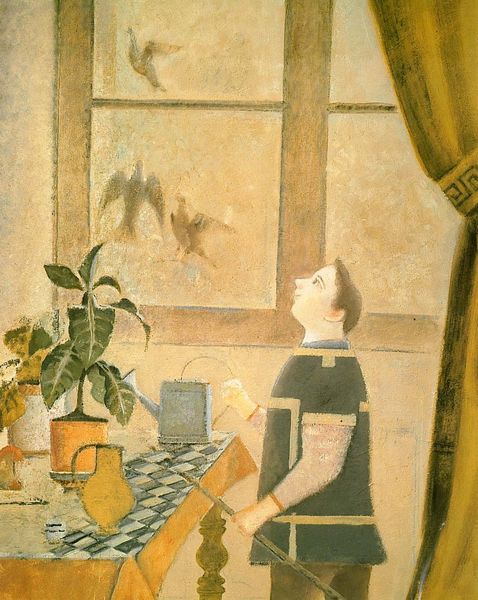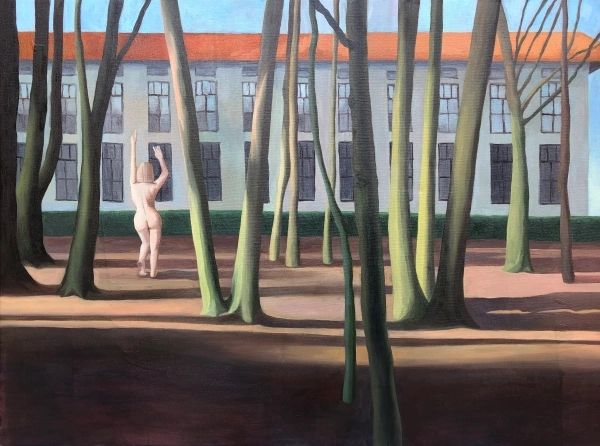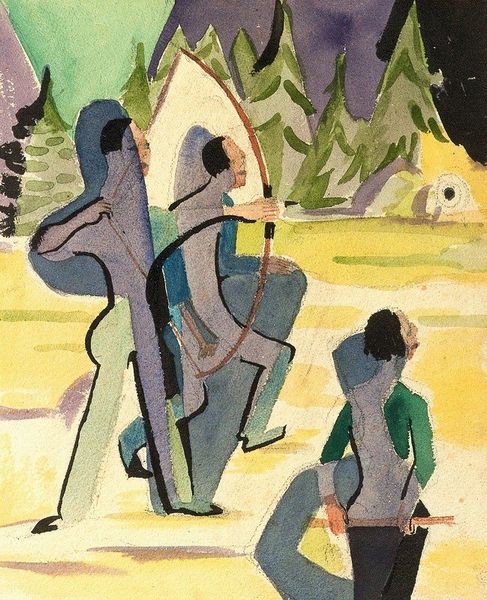
Copyright: Public domain
Curator: What an interesting composition. There's almost a dreamlike quality to this scene. Editor: This is “Tennis (triptych, left wing)” by Eric Ravilious, made around 1930. He worked in watercolor and often painted en plein-air. It's fascinating to see how he applies a modern lens to the traditional genre painting, capturing a moment of leisure in a seemingly idyllic landscape. Curator: The landscape is striking. Look at the way the stark geometry of the tennis court clashes—yet somehow also blends—with the organic shapes of those towering trees. It creates a tension between the man-made and the natural. The labor put into making this manicured space must have been pretty significant. Editor: Exactly! It prompts a discussion on gender roles and social expectations in interwar Britain. Tennis wasn't just a sport, but a stage upon which societal hierarchies were enacted, reflecting a privileged lifestyle unavailable to many. These women become representations of a leisure class, mediated by both social and gender norms of the time. Curator: And the color palette supports this; the soft greens and faded pinks speak to a sense of nostalgic elegance, perhaps a carefully curated version of reality. It gives off the impression that the materials themselves contribute to the storytelling, in tandem with Ravilious' specific processes. I wonder what brands and tools did he have access to, and how did it influence his creation process? Editor: It's an idealized, but also slightly unsettling vision. The rigid lines of the court, the almost cartoonish shadows. These subtle details offer a glimpse beyond the surface of idealized femininity, hinting to a broader complexity that goes beyond leisure. These kinds of spaces reinforced societal boundaries. It makes one reflect on power dynamics, as tennis in this time frame certainly reflected the inequalities that many struggled to overcome. Curator: Seeing how Ravilious manipulated the materiality of watercolor allows you to question the perceived neutrality of this scene. It challenges you to question what really existed behind the image. Editor: Ultimately, viewing "Tennis" through an activist lens pushes us to think about whose stories are typically told and remembered through art. How do these representations challenge or reinforce systems of privilege?
Comments
No comments
Be the first to comment and join the conversation on the ultimate creative platform.
